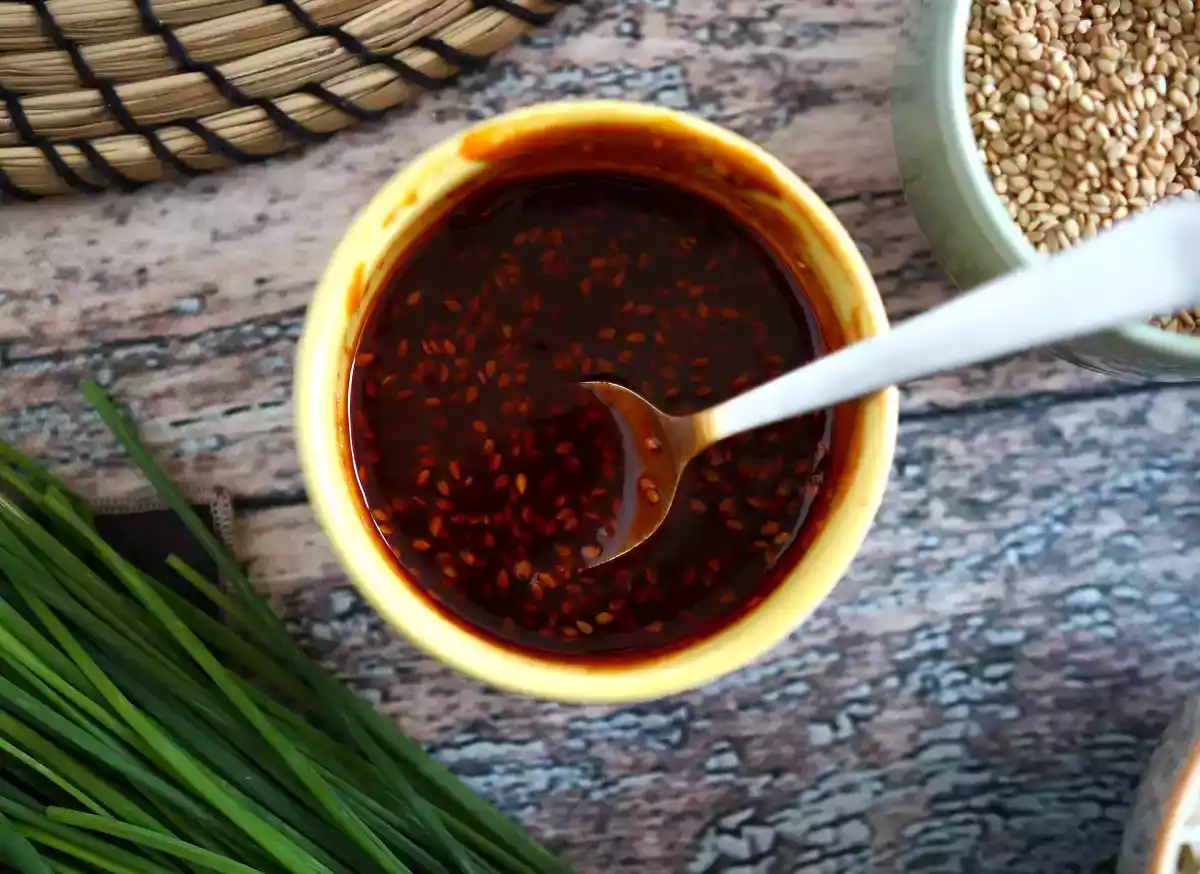Must-have sauces for Asian cuisine

If you want to give your dishes an Asian touch, there's no better way than to choose your sauces carefully. Asian cuisine is a festival of complex, balanced flavors, and sauces play a key role in that balance. Whether you're preparing a quick stir-fry, a comforting soup or a noodle dish, these few basic sauces will make all the difference :-)
Soy sauce: the essential base
Soy sauce is a mainstay of Asian cuisine. It's perfect for seasoning just about anything: stir-fries, soups, marinades, or even for dipping sushi. There are two main types:
- Light soy sauce, saltier and more liquid, ideal for cooking and enhancing flavors.
- Dark soy sauce is slightly sweeter and thicker, ideal for adding color to dishes.
A little drizzle of soy sauce, and your stir-fried vegetables or rice dishes take on a whole new dimension!
Hoisin sauce: sweet and fragrant
Hoisin sauce is a little wonder for lovers of sweet and spicy flavors. Often used in Chinese dishes, this thick sauce made from soy, garlic, vinegar and sweet chili lends an almost caramelized quality to your dishes. It's ideal for marinades (perfect for ribs!), but also as an accompaniment to grilled vegetables, or as a dip with egg rolls or spring rolls.
Fish sauce: a concentrate of umami
If you want to cook Thai or Vietnamese cuisine, fish sauce is a must. Made from fermented fish, this sauce brings an intense umami flavor to your dishes. Use it in soups like the famous Vietnamese phở, or to season your meat or fish marinades. Mix it with lime, a little sugar and chillies to make a delicious dipping sauce.
Oyster sauce: the gourmet touch
Oyster sauce has a mild, slightly sweet flavor, perfect for enhancing your vegetable or meat stir-fries. It's used in a multitude of Chinese and Thai dishes, and if you want to prepare a beef stir-fry or crunchy vegetables with a rich sauce, it's perfect. Just a few spoonfuls are enough to transform a simple dish into a richly flavored meal!
Rice vinegar: for the perfect balance
Rice vinegar is a light but essential ingredient, especially if you're cooking Japanese dishes. With its sweet, tangy taste, it balances the flavors of dishes such as sushi, salad dressings and marinades. It is also used in sweet and sour dishes to add a subtle touch of acidity.
Mirin: subtle sweetness
Mirin, a sweet rice wine, is a magical ingredient for adding a sweet note and appetizing shine to your dishes. It is often used in Japanese recipes such as teriyaki sauce or to caramelize salmon. It also goes perfectly with soups and broths, bringing a sweet-savory balance that will delight your taste buds.
Chili sauces gochujang and sriracha
- Gochujang is a must-have for those who like a bit of a kick! This Korean chili paste, made from fermented red chili peppers, soy and salt, brings incomparable sweetness and depth of flavor. It's perfect for adding a kick to soups, marinades, or even as a base for sauces. Mixed with honey and vinegar, it makes an excellent sauce for grilled meats or roasted vegetables :-)
- Sriracha is a popular Thai hot sauce made from chili peppers, garlic, sugar, vinegar, and salt. It is known for its bright red color, pungent flavor, and slightly sweet taste. Sriracha is often used as a condiment to add heat and flavor to various dishes. It can be used as a base for sauces and marinades. It also can be added as a topping to burgers, tacos, pizzas, and other foods. It can be incorporated into recipes like soups, stews, and stir-fries.
Teriyaki sauce: sweet and savoury
Teriyaki sauce, sweet and savory, is a staple of Japanese cuisine. It's generally made from soy sauce, mirin, sugar and sometimes garlic or ginger. This sauce is perfect for marinating meats, especially chicken, but also for coating grilled vegetables. A little brush of teriyaki sauce on your skewers or roasted vegetable dishes and you've got yourself a delicious, gourmet meal!
Miso, a Japanese fermented soybean paste
Miso is a fermented soybean paste that is a staple in Japanese cuisine. It's made by combining soybeans with koji mold (a type of fungus) and salt, and then allowing the mixture to ferment for varying lengths of time.
You can find 3 types of miso:
- White miso: The mildest and sweetest type, often used in soups and dressings.
- Red miso: The most flavorful and salty type, with a strong fermented taste. It's commonly used in stews and marinades.
- Awase miso: A blend of white and red miso, offering a balance of flavor and sweetness.
Miso is often used in soups, marinades, sauces.
You'll also need: sesame oil
Sesame Oil: A Versatile Ingredient
Sesame oil, with its nutty flavor and distinct aroma, is a staple in many Asian cuisines. Here are some of its common uses:
- Dipping Sauce: It can be used as a dipping sauce for dumplings, spring rolls, or sushi.
- Seasoning: Sesame oil can be drizzled over cooked vegetables, noodles, or rice for a final flavor boost.
- Infusion: It can be infused with other flavors like garlic or ginger for a unique taste.

Korean style salmon with gochujang sauce ready in 8 minutes

Zucchini skewers with a delicious, spicy asian sauce

Teriyaki chicken, the sweet and savory japanese sauce!

Korean style mushrooms - shiitake mushrooms with gochujang sauce

Pad thai with tofu

Chow mein (chao men), chinese noodles with chicken and vegetables

How to cook instant noodles? quick recipe with beef and mushrooms!

Rice noodles with mushrooms and their soft-boiled egg!

Bibimbap, the traditional korean dish

Vegetable and shrimp wok
 Adèle Peyches
Adèle Peyches
Comments